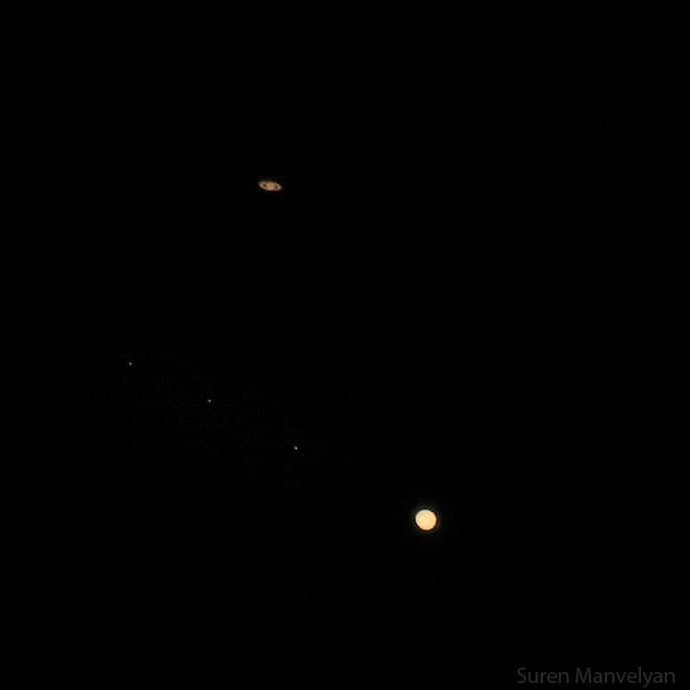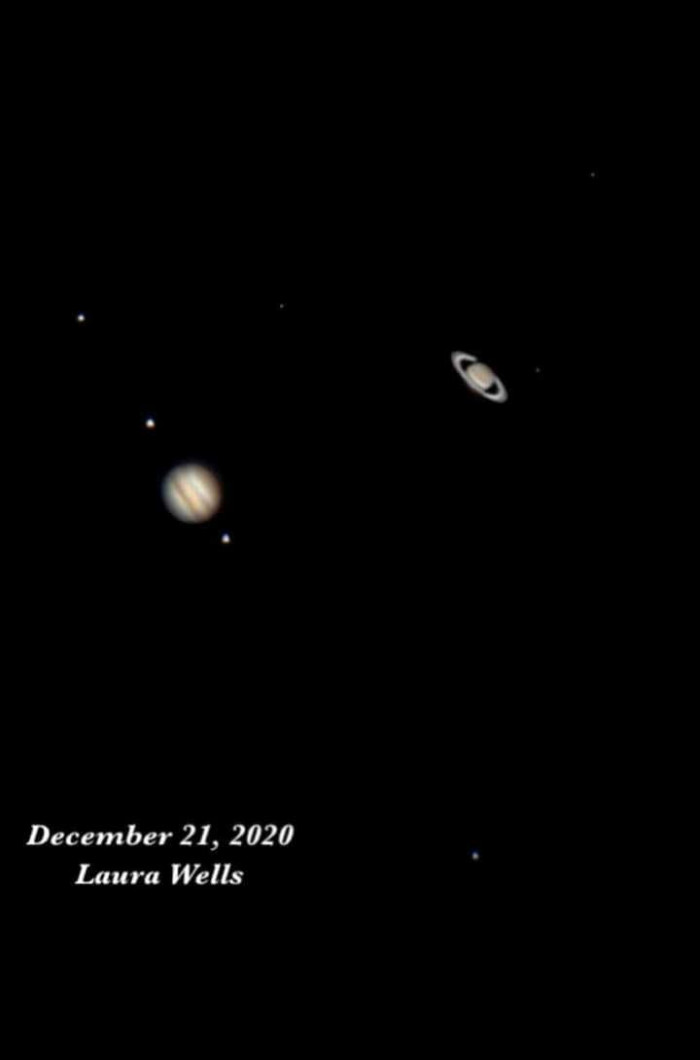Saturn and Jupiter closer in the night sky than they have in centuries
 2484 Tuesday, 22 December, 2020, 22:15 Tonight’s the night: Saturn and Jupiter will appear closer in the night sky than they have in centuries, in an astronomical event called a conjunction. The gas giants, the solar system’s two largest planets, will appear only 0.1 degree apart overhead on Monday. They’ll move slightly farther from each other during the rest of this week, but remain unusually close. In reality, the planets are separated by 456 million miles of space. Jupiter, the more massive of the two, is about 550 million miles from Earth, and Saturn is roughly 1 billion miles away. “Jupiter comes around every 20 years or so and catches up with and passes Saturn. That’s when we have one of these conjunctions,” says Jeffrey Cuzzi, a research scientist at NASA’s Ames Research Center in Mountain View, Calif. Such conjunctions recur every two decades owing to their orbital periods. Cuzzi says that “even after December 21st, you can watch the planets start to move away, which is kind of fun, because normally you don’t notice the motion of the planets in the sky.”Planetary wanderlust The world was quite different at that time. Three years earlier, the Pilgrims had disembarked at Plymouth Rock. Galileo Galilei, the famed Italian astronomer, had discovered Jupiter’s satellites just 13 years earlier. People can pay homage to Galileo by observing this conjunction with a pair of binoculars, if not a telescope. The optics in a pair of binocs are “probably about as good” as the telescope Galileo used to discover Jupiter’s moons, Cuzzi says. Before the 1623 conjunction, the next best one—which was viewable, occurring at night—happened in 1226. At that time, the Mongolian conqueror Genghis Khan was leading his army on a warpath across Asia.Planets passing in the night     |

Japan Unveils Human Washing Machine, Now You Can Get Washed Like Laundry (video)
851401.12.2025, 20:45
Chinese humanoid robot sets Guinness World Record with 106-km inter-city walk (video)
908424.11.2025, 16:30
Musk։ Optimus will be able to eliminate poverty and provide everyone with a universal high income (video)
1069823.11.2025, 12:45
AGMI researchers expose the hidden role of female perpetrators in the Armenian Genocide (photo)
553213.11.2025, 21:15
LVM3-M5 mission successfully launches CMS-03 satellite (video)
818002.11.2025, 21:17
Google разработала квантовый алгоритм, работающий в 13 тыс. раз быстрее алгоритма суперкомпьютеров
795022.10.2025, 23:44
Apple introduces the powerful new iPad Pro with the M5 chip
875015.10.2025, 23:34
Apple debuts iPhone 17
888209.09.2025, 23:08
